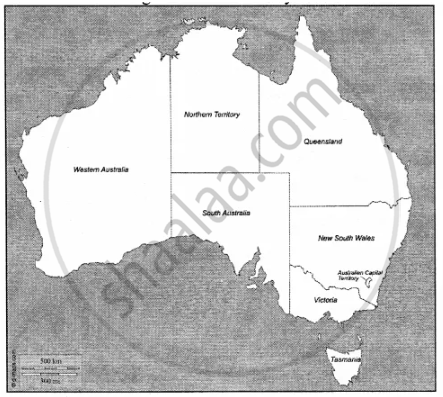Advertisements
Advertisements
प्रश्न
Collect information about the Great Barrier Reef from encyclopedias or the Internet and write a diary describing all you have learned about it in your scrapbook.
उत्तर
The Great Barrier Reef is one of the seven wonders of the natural world and pulling away from it, and viewing it from a greater distance, you can understand why. It is larger than the Great Wall of China and the only living thing on earth visible from space.
Where Is The Great Barrier Reef?
The marine park stretches over 3000km (1800 miles) almost parallel to the Queensland coast, from near the southern coastal town of Bundaberg, up past the northern tip of Cape York.
The reef, between 15 kilometres and 150 kilometres offshore and around 65 Km wide in some parts, is a gathering of brilliant, vivid coral providing divers with the most spectacular underwater experience imaginable.
A closer encounter with the Great Barrier Reefs impressive coral gardens reveals many astounding underwater attractions including the world’s largest collection of corals (in fact, more than 400 different kinds of coral), coral sponges, molluscs, rays, dolphins, over 1500 species of tropical fish, more than 200 types of birds, around 20 types of reptiles including sea turtles and giant clams over 120 years old.

What Is The Great Barrier Reef?
The reef is a breeding area for humpback whales, migrating from the Antarctic and is also the habitat of a few endangered species including the Dugong (Sea Cow) and large Green Sea Turtle. In recognition of its significance, UNESCO listed the Great Barrier Reef as a World Heritage Site in 1981.
Because of its natural beauty, both below and above the water’s surface, the reef has become one of the worlds most sought after tourist destinations.
In 2006 there were approximately 820 operators and 1500 vessels and aircraft permitted to operate in the Great Barrier Reef Marine Park providing ease of access for all to experience the Great Barrier Reef and learn first hand about its natural delights and World Heritage values.
One of Australia’s most remarkable natural gifts, the Great Barrier Reef is blessed with the breathtaking beauty of the world’s largest coral reef. The reef contains an abundance of marine life and comprises of over 3000 individual reef systems and coral cays and literally hundreds of picturesque tropical islands with some of the worlds most beautiful sun-soaked, golden beaches. Because of its natural beauty, the Great Barrier Reef has become one of the worlds most sought after tourist destinations. A visitor to the Great Barrier Reef can enjoy many experiences including snorkelling, scuba diving, aircraft or helicopter tours, bare boats (self-sail), glass-bottomed boat viewing, semi-submersibles and educational trips, cruise ship tours, whale watching and swimming with dolphins.
A Natural Wonder :
The Great Barrier Reef is one of the seven wonders of the natural world and pulling away from it, and viewing it from a greater distance, you can understand why. It is larger than the Great Wall of China and the only living thing on earth visible from space.
APPEARS IN
संबंधित प्रश्न
What are the chief physical divisions of Europe?
In your atlas, locate the major and minor rivers flowing through Europe. Note the names of important cities/towns that have developed on the banks of these rivers. Then tabulate your observations in your notebook using the headings given here :
- Name of the river
- Countries through which it flows
- Important town/cities situated on its banks.
Write true or false. Correct the false statement.
Softwood trees such as pine, fir, and spruce are found in the taiga belt.
Write true or false. Correct the false statement.
Wild cats and large fur-bearing animals are not found anywhere in Europe.
Name three great explorers connected with the African continent.
List the factors that affect the climate of Europe
Collect pictures and information on the natural vegetation and wildlife of Europe from encyclopedias and the Internet, and make a scrapbook.
Match the following:
| Column A | Column B |
| 1. Egypt | (i) Accra |
| 2. Kenya | (ii) Tripoli |
| 3. South Africa | (iii) Addis Ababa |
| 4. Ethiopia | (iv) Cairo |
| 5. Ghana | (v) Nairobi |
| 6. Libya | (vi) Pretoria |
Give geographical reasons:
The equatorial region has dense forests.
Give geographical reasons:
Not much wildlife is found in the Mediterranean region of Africa.
